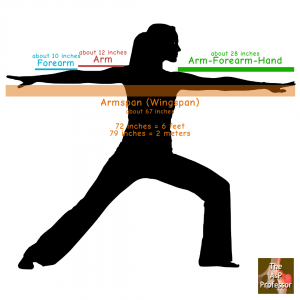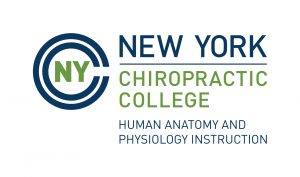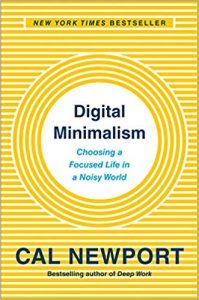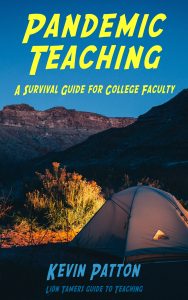The Surprising Power of Digital Textbooks
TAPP Radio Episode 76
Episode
Episode | Quick Take
Like it or not, digital textbooks are here and will soon be the primary form of textbook used by students and teachers. Host Kevin Patton discusses this trend and outlines ways to leverage digital textbook features for more effective teaching and learning. Mike Pascoe brings us a Book Club recommendation and Kevin discusses arms, arm-lengths, and legs.
- 00:48 | Digital Is Here
- 10:09 | Sponsored by AAA
- 11:02 | Digital Textbook Love
- 22:43 | Sponsored by HAPI
- 23:59 | Book Club: Digital Minimalism
- 26:29 | Sponsored by HAPS
- 27:19 | Arm’s Length
- 32:35 | Staying Connected
Episode | Listen Now
Episode | Show Notes
Lovers of print are simply confusing the plate for the food. (Douglas Adams)
Digital Is Here
9.5 minutes
Like it or not, digital textbooks are here. Whether we call them eTexts, electronic textbooks, eTextbooks, or whatever, many publishers are already in the digital-first or digital-only mode. Before long, digital textbooks will soon be the primary way that students use textbooks.
- History of the Ebook: The Changing Face of Books (journal article, but dated) my-ap.us/31koutu
- A Brief History of eBooks (yep, very brief) my-ap.us/30x6Xio
- Digital Is Coming For Your Textbook (blog post from the Textbook & Academic Authors Association) my-ap.us/3kqkujY
Sponsored by AAA
1 minute
A searchable transcript for this episode, as well as the captioned audiogram of this episode, are sponsored by the American Association for Anatomy (AAA) at anatomy.org.
Don’t forget—HAPS members get a deep discount on AAA membership!
Digital Textbook Love
12 minutes
Digital textbooks have a lot of features that can be leveraged for teaching and learning—including flipped courses, distance courses, or remote pandemic teaching. For many of us, our fumbling first tries are awkward and uncomfortable—but we may eventually fall in love with digital textbooks.
- Benefits and Helpful Features of eBooks (blog post) my-ap.us/31ngqrR
- Running Concept Lists Help Students Make Connections | Episode 8
- Concept Lists Help Students Build Conceptual Frameworks (online seminar)
Sponsored by HAPI Online Graduate Program
1 minute
The Master of Science in Human Anatomy & Physiology Instruction—the MS-HAPI—is a graduate program for A&P teachers, especially for those who already have a graduate/professional degree. A combination of science courses (enough to qualify you to teach at the college level) and courses in contemporary instructional practice, this program helps you be your best in both on-campus and remote teaching. Kevin Patton is a faculty member in this program. Check it out!
Book Club
2.5 minutes
- Digital Minimalism: Choosing a Focused Life in a Noisy World
- by Cal Newport
- amzn.to/37LHfqP
- Recommended by Mike Pascoe
- For the complete list (and more) go to theAPprofessor.org/BookClub
- Special opportunity
- Contribute YOUR book recommendation for A&P teachers!
- Be sure include your reasons for recommending it
- Any contribution used will receive a $25 gift certificate
- The best contribution is one that you have recorded in your own voice (or in a voicemail at 1-833-LION-DEN)
- Contribute YOUR book recommendation for A&P teachers!
- For the complete list (and more) go to theAPprofessor.org/BookClub
Sponsored by HAPS
1 minute
The Human Anatomy & Physiology Society (HAPS) is a sponsor of this podcast. You can help appreciate their support by clicking the link below and checking out the many resources and benefits found there. Watch for virtual town hall meetings and upcoming regional meetings!
Arm’s Length
5 minutes
Two meters or six feet are often given as a minimum safe distance when distancing to reduce the spread of airborne viruses such COVID-19. As a practical guide, some sources state that this distance is about “two arm lengths.” But Kevin questions whether “one arm span” may be what these sources really mean—and may be a better practical guide. Otherwise, people may be distancing at only about four feet and not the recommended two meters (6.5 feet)—about 60% of the most effective minimum distance. Because Kevin can never leave well enough alone.
- In the United States, the CDC recommends, “To practice social or physical distancing, stay at least 6 feet (about 2 arms’ length) from other people who are not from your household in both indoor and outdoor spaces.” my-ap.us/2PBO3AS
- The Canadian Health Service similarly advises, “keeping a distance of at least 2 arms lengths (approximately 2 metres) from others, as much as possible” my-ap.us/3fAWc32
- “The arm span measurement is usually very close to the person’s height. For example, a 168cm (5ft 6in) person will have an arm span of about 168cm (66in)” according to an article in Wikipedia my-ap.us/33ChKKp
- Diagram giving some rough estimates (individual measurements vary)
- Two metres or one: what is the evidence for physical distancing in covid-19? (review/analysis article from BMJ questions the 2-meter rule; includes diagram showing various levels of risk) my-ap.us/3hzDURI

Need help accessing resources locked behind a paywall?
Check out this advice from Episode 32 to get what you need!
Episode | Captioned Audiogram
Episode | Transcript
The A&P Professor podcast (TAPP radio) episodes are made for listening, not reading. This transcript is provided for your convenience, but hey, it’s just not possible to capture the emphasis and dramatic delivery of the audio version. Or the cool theme music. Or laughs and snorts. And because it’s generated by a combo of machine and human transcription, it may not be exactly right. So I strongly recommend listening by clicking the audio player provided.
 This searchable transcript is supported by the
This searchable transcript is supported by the
American Association for Anatomy.
I'm a member—maybe you should be one, too!
Introduction
Kevin Patton:
In the radio series Hitchhiker’s Guide to the Future, satirist Douglas Adams said this about digital books, “Lovers of print are simply confusing the plate for the food.”
Aileen:
Welcome to The A&P Professor, a few minutes to focus on teaching Human Anatomy and Physiology, with the veteran educator and teaching mentor, your host, Kevin Patton.
Kevin Patton:
In this episode, I discussed arm length, digital textbooks, and a new book club pair.
Digital Is Here
Kevin Patton:
We’ve been in the digital age for quite some time now, and eBooks have been around quite a while, including digital textbooks. Notice that I just used the terms eBook and digital textbook. I haven’t even had the chance yet to drop in eTextbook, electronic book, online textbook, eText, nor have I had the chance yet to trust the variations of spelling involved in each of those. Is the E in eBook lowercase or uppercase? Is that E hyphenated or just added on the book or text or whatever we’re prepending it to? I know, you’re anticipating that I’m headed into a word dissection, but I’m not. I’m just going to try and stick to one term if I’m able to and that is digital textbook. I want you to know what I’m referring to with that term, and I don’t want you to be taken by surprise if I slip up and call it an eBook or eText…
Kevin Patton:
Before I get to my main point, which I’m sure you realize by now, I never just go directly to, I want to point out that we’ve been hearing about the demise of the printed textbook ever since the 1930s. Okay, I wasn’t around in the 1930s but if you look at the history of this, you’ll see that that’s when folks start worrying about this or start eagerly anticipating it, depending on your point of view. That’s when the idea of a digital textbook became a thing and that certainty of the death of printed books got even stronger in the years since Project Gutenberg started distributing digital books back in 1971. Now I was alive for that, but I don’t remember Project Gutenberg because I was still in grade school back in ’71. I was barely paying attention to the print books we had.
Kevin Patton:
The wide availability of eReaders and tablet devices starting about 20 years ago has just added fuel to this idea. Nowadays we’re just waiting for the final, final end of printed books, and yet they’re still here especially textbooks. Printed textbooks and probably especially Anatomy, Physiology and combine the A&P books don’t seem to be going anywhere, but I think they’ll become far less common in the very near future. Here’s why.
Kevin Patton:
First, A&P textbooks are big. Those meant for a full-year course are really big. Even those meant for a one-semester course are still big and heavy and a pain to carry around, sometimes a literal pain to carry around. Carrying them around especially if not done properly can lead to injury or at least discomfort. I used to joke with a former editor of mine when I was asking to put more pages in my AP textbooks that the sales of the Physical Therapy books that she edited would also benefit by having increased sales. Because all these potential clients would now have back problems and need various kinds of therapy because they’re carrying around this now, even heavier A&P book. My current editor can verify that in each new edition I request that luggage wheels and an extendable handle be added to each printed copy to make them more practical to carry to class. You think I’m kidding, and you should know me better right now. I’m not kidding, I really do asked for that.
Kevin Patton:
Really, how many of our students bring their books to class? That would be, oh, so, so helpful. Besides being able to clearly see any image or table from the book that might also be using to tell my story during class, they’d have it right there to help them do some research, to solve a case study I might give them to solve in a small group. They could quickly go back and check on some concept that we explored earlier in the course and maybe has come up again. They could just flip back to chapter five and see that summary chart, right? In lab, they have all those skeletal images and all those tables to self-supplement their library sources, but a print book makes that hard. I tell my students to use the binder-ready version if they want to print textbook. That way, they really can carry the current chapters with them to lecture and lab class and to study while on campus. Of course, that doesn’t help much when they need to refer to past chapters or peak ahead to later chapters.
Kevin Patton:
Well, will they remember to carry along the glossary or index or those helpful appendices? Yes, the appendices have a function. Really, the size thing is it’s really an availability of content anytime you needed thing and that is no small thing. It’s a really, really, really big thing. That’s three reallys and that’s a lot of reallys on my scale. This alone may be the single most likely thing to make digital textbooks the primary tool for our students.
Kevin Patton:
Another important factor is the fact that major publishers are moving in the direction of digital-only offerings. Even small publishers are jumping on that. There are some books that even now are available only as a digital textbook, but many others are now or soon to be digital first. That means that the content, editing and production of new additions will be designed primarily for digital and print will only be secondary. Many publishers are either thinking digital textbooks are about to take center stage and they want to be ready for that, or they’re actively pushing the market in that direction. No matter the thinking behind it is happening now, right now. Both of these ideas lead me to yet another reason I think print textbooks will be far less common in the near future.
Kevin Patton:
Digital textbooks can be integrated with other digital media. They can be embedded into adaptive learning and quizzing platforms into virtual lab and dissection experiences even into other learning products for other courses. For example, what if my students could call up a section of a general bio textbook or an intro chem book as needed when they’re studying the cell or ions or enzymes while they’re doing A&P? What if a nursing student could review their cardiovascular A&P when starting their study of cardiac care in their nursing course?
Kevin Patton:
Now backing out of that rabbit hole, or rather taking a different little rabbit tunnel, what about the availability of content needed in the health professions workplace? More and more nurses, therapists, physicians, and other healthcare professionals carry around their mobile devices and use them as essential tools for reference and communication. They look up different differential diagnosis, different drug dosages, and who knows maybe they look up the Krebs cycle in their digital A&P textbooks.
Kevin Patton:
So really, doesn’t it make sense that will soon be starting them off on that earlier in their undergrad A&P course? I know what you’re thinking. Okay, I don’t know what you’re thinking when I say that, but I know what I’m thinking and that is, aren’t those screens too small to explore the details of a nice full-page image of the brain or the abdominal organs or the skeleton? Yeah, probably, but you know what? The train has left the station. We’ll just have to adapt. I think the technology will help us adapt by providing maybe, I don’t know, flexible rollout screens for our small devices for those moments when we need to access that detailed scheme of arterial distribution in the whole body or something like that. You know what? Now finally, I’m ready to get to my main point, but let’s take a break first.
Sponsored by AAA
Kevin Patton:
A searchable transcript and the captioned audiogram of this episode are funded by AAA, the American Association for Anatomy. A few weeks ago, AAA celebrated the one year anniversary of the new name and branding, and more importantly, a renewed and expanded commitment to serve the Anatomy community. One of the reasons for the new name and brand was to make it clear that the organization serves more than those who think of themselves as anatomists. Instead, it serves everyone who is for Anatomy. You know what? That includes you. Check out AAA and all its many resources and networking opportunities at anatomy.org.
Digital Textbook Love
Kevin Patton:
In the previous segment, I explained why digital textbooks are here or very nearly here as the main form of textbooks that our students will be using in their Anatomy and Physiology courses. Despite our natural longing for the A&P courses of our youth, when we had to walk uphill both ways to get to our classes and we didn’t have the internet, yes, I’m that old. We had to clean our chalkboard erasers every afternoon by banging them together outside. Maybe we need to embrace change and find ways to leverage the characteristics of digital textbooks to our and our students’ advantage.
Kevin Patton:
I never thought I’d appreciate PowerPoint or SMART Boards or online courses, but look at me now, how can I live without them? I’m thinking, you know what? I can adapt to digital textbooks and maybe even learn to love them. I’m already falling in love with them.
Kevin Patton:
Here are a few reasons I’m starting to love digital textbooks for A&P. The first one is obvious, and I already know mentioned it. It’s so nice that both me and my students have immediate access to our digital textbook at any time. It’s on my iPhone, it’s on my laptop, and it’s on my desktop. I can put it on my tablet. I can put it in my hat. Okay, maybe not my hat. If I had a smartwatch, I could put that in my hat, so why not? Now that alone is possibly enough of a reason to love A&P textbooks that are digital, but there’s more.
Kevin Patton:
For example, students can highlight and make notes on specific words, sentences, passages, illustrations, tables and more. These notes can explain the text in a different way, perhaps the way the instructor explained it in class, or they could emphasize a concept that might be coming up on the test. The notes might mark something that the student is puzzled by and wants to bring to their study group or bring to the instructor for clarification. As you could imagine, there are all kinds of reasons to make notes in the book.
Kevin Patton:
But wait, hold on. This highlighter note function can be used for communication. I do this now with one of my courses. I’ve made highlighted notes in my textbook and shared them with my class. I can make a note on a table and tell them, “Hey, this isn’t to be memorized, but instead look at the relationships here to gain insights on how this concept works.” For example, in the textbook, there’s this big table of autonomic transmitters and receptors and examples of pharmacological applications that would be a bear to memorize and very little reason to do so for most undergrads. Looking at the table, a student can appreciate the complexity of autonomic regulation of the factors that you just can’t get from the simpler version of the story that we tell our students. Putting a note there for my students is a way to say, “Look here, there’s more to the story. This complexity that you see here gives us fine control of many functions. We can leverage that complexity to provide drug therapy. Don’t get bogged down in it, just marvel at it with me.”
Kevin Patton:
So I put a lot of those notes in there for my students. I can also highlight sections to focus on and other sections to view as optional background reading. I can point out case studies or critical thinking questions that may help them prepare for the questions I’ll be asking on a test or exam. I can put in URLs of additional images or graphs or tables that just didn’t fit in the textbook, a different way of looking at things that might help them understand what it is they’re looking at when they’re looking at the book. Or I could put in reminders of test dates even. I can point out differences between the terminology I used and the terminology that’s preferred in the textbook. I can point out places where my story is slightly updated from what’s in the current edition of the textbook. I can give alternate or additional explanations for concepts that I know many students are going to have difficulty with. I have all notes that appear in their digital textbooks automatically once they subscribed using my email address and after they turn them on in their digital textbook.
Kevin Patton:
You know what? If my highlights are distracting them, they can simply toggle them off and then later on they can toggle them back on if they need them. In a digital textbook, students can take all or some of their notes or my notes or notes shared from other students or any combination of those and assemble them into a little study guide or personalized notebook. I think that this is a great tool for online teaching, as well as any kind of flipping of a course. The textbook often serves as the primary authoritative explanation and illustration of concepts in the A&P course. I mean, that’s true anyway, right? What this technique does is it allows us to be the virtual guide on the side by leveraging the power of our highlighted notes to guide the students as they explore each chapter. But wait, there’s even more.
Kevin Patton:
In several previous episodes, most notably in episode eight and in a seminar that you can find @theAPprofessor.org, I talked about the value of concept lists, or I often call them running concept lists in helping students recognize, remember, and apply core concepts of human science as they learn the specifics laid out in each chapter of their textbooks and in each module of our course. The easy searchability of a digital textbook makes this process work more efficiently. If they want to find where calcium is mentioned in the textbook, they can simply type calcium or calcium ion right there into the search box in their digital textbook. They can see all the different concepts in all the different locations in the textbook that involve calcium and that depend on calcium homeostasis. There’s muscle contraction, nerve signaling, endocrine signaling, bone formation, and all the rest. Just finding the spot in the book a student is looking for when they raid their books to help them with a particular concept or particular description of something can be enhanced by this search feature sample.
Kevin Patton:
For example, let’s say that they’re in the lab and they need to find the styloid process on the skull. They can search for that and find the text description in the chapter narrative and maybe in a table as well as any images where it appears. Oh, how I could use that as a student back in the day? Then there’s the text to speech function. Probably all of us benefit from using spoken word along with reading at least from time to time.
Kevin Patton:
Considering how technical an A&P textbook is compared to what most of our students are used to, they quite frequently struggle with understanding even the most simple and clear explanations. Hearing a passage spoken aloud can go far in helping them understand what they’re reading. Then consider our students who are language learners. They often benefit from reading and hearing at the same time. There are a lot of different reading difficulties that even our most gifted students have, and that can be overcome at least partly by using the text to speech function. Students with or even without reading impairment can use the audio alone to study. For example, a student can preview or review a chapter while commuting or doing chores or exercising, just like you’re listening to this podcast right now. Then there are the flashcards that are built into eBooks. I’m not ashamed to admit it. My students have to memorize things, a list the bones features, a list of muscles, all kinds of organs and facts about them.
Kevin Patton:
Sure, they also have to be able to apply and analyze and evaluate and solve problems, but there’s also memorization involved and flashcards can help with that. Digital textbooks make it easier for students to make their own digital flashcards based on what they’re reading as they read it, and that can also be printed out. It takes student made flashcards to a whole new level I think.
Kevin Patton:
There’s a lot more, but I don’t want to make this episode a two-hour long episode like the last one; oh, my gosh. I’ll wrap up this discussion by encouraging you pleading with you to get a digital version of the textbook you’re using right now and start using it. Don’t just glance at it. Don’t play with it for a week and then set it aside. Start really using it as your primary way of using the textbook. Try reading it, try making highlights with notes, try sharing those notes, try making and using flashcards. Listen to the text to speech feature, really make a go of it. Why? Because if you don’t, the world of A&P teaching and the world of A&P learning will pass you by, really. You’re young and vibrant and with it and every other way, but your students are going to recognize that you’re still firmly rooted in the past if you’re not using a digital textbook.
Kevin Patton:
Okay, maybe not this year, students, but next year or maybe the year after. The point is you need to start now so that you’re really, really comfortable with it and you really know the ins and outs. It’ll be awkward and uncomfortable at first and you’ll fumble a bit, but it’ll get easier and more comfortable, I promise. Who knows? You take your digital textbook out for a walk in the woods and maybe on a picnic or two, and you may end up falling in love.
Sponsored by HAPI
Kevin Patton:
The free distribution of this podcast is sponsored by the Master of Science in Human Anatomy and Physiology Instruction, the HAPI degree. I can’t tell you how many messages I’ve been getting from our current learners and alums about how much their HAPI experiences helped them cope with the challenges of pandemic teaching. Okay, I could tell you if I check all my inboxes and counted them up, but that’s not the point. The point is, is what the HAPI program provides is this set of knowledge, skills, understanding, and practice in applications to be agile, resilient A&P instructors, and a supportive network of close colleagues as a bonus. Check out this online graduate program @nycc.edu/hapi; that’s H, A, P, I, or click the link in the show notes or episode page. There’s a new fall cohort forming right now. So maybe now is the best time to take that next step.
Book Club: Digital Minimalism
Kevin Patton:
Lest you think that my advice to accept and even embrace the coming wave of digital textbooks is meant to keep you hooked on your electronic device, I’m happy to provide a counterbalance in the form of this contribution by our friend of Mike Pascoe, who brings us another of his recommendations for The A&P Professor Book Club.
Mike Pascoe:
Hey, Kevin, Mike Pascoe here. I’ve got another recommended book for your book list. This one is not anatomy related, but I think it would benefit a lot of your listeners as they think about their own productivity and academia and really productivity in everyday life. The book title is Digital Minimalism, and the author is Cal Newport. I think this will appeal to academics because the author Cal Newport is himself an academic. So he definitely speaks from a place of how to improve your productivity, what’s it like to do this high-level cognitive work. It really does resonate with the academic. Even though as he goes through his book on Digital Minimalism, it really is targeted at a general population.
Mike Pascoe:
So I really just love the way he structured the book, the topics he goes through, the research that he highlights. It’s really just changed the way I view the device that I’m recording this on right now, how often am I accessing my mobile device, how am I using it, how was it even intended to be used, and how can I break free and what am I losing and what can I gain by spending more of my time in analog pursuits.
Mike Pascoe:
So I really think it does inform not only my own productivity and my own outlook on how much time I’m spending on my mobile device, but it really does inform me on how my students might be using these devices and what the risks and benefits are around their own usage around these devices. Because we all know technology-enhanced learning is becoming a mainstay in anatomy education. So that’s my second title, my second recommendation for the A&P book list, and thanks for allowing us to submit our recommendations.
Kevin Patton:
Well, thanks Mike Pascoe for bringing this book to our attention. Mike has already received the gift certificate that any contributor to The A&P Professor Book Club receives. Check the show notes or episode page to find out more about that.
Sponsored by HAPS
Kevin Patton:
Marketing support for this podcast is provided by HAPS, the Human Anatomy and Physiology Society, promoting excellence in the teaching of Human Anatomy and Physiology for over 30 years. Go visit HAPS @theAPprofessor.org/haps; that’s H, A, P, S. There you’ll find a whole field of ripe resources ready for the picking, networking events, curriculum guidance, and more just a few clicks away. I’ve been active in HAPS since its official start. It’s been a huge factor in my professional development, and it’s also enrich my personal life. Just go to theAPprofessor.org/haps and check it out.
Arm’s Length
Kevin Patton:
Not long ago, as I was watching one of several nearly identical but required videos, telling me how to enter and behave in each campus building, unsurprisingly each having exactly the same procedure, something about Human Anatomy mentioned and each one struck me is, well, kind of odd. Having been fully immersed in A&P all summer, I took time out to watch these videos. When in the videos, they repeated the CDCs advice to maintain safe distance while on campus, I was struck by the tip they gave that we should stay two arm lengths away from each other. I thought to myself that my arm, which extends from my shoulder to my elbow, isn’t a meter long and it’s not even three feet, which is half of the two meters or the slightly shorter six feet that we most often hear about as recommended as a safe distance. Then I thought, “Okay, they’re not using anatomical terminology here.” In Anatomy, the arm goes from the shoulder joint to the elbow joint, and the forearm goes from the elbow joint to the wrist. In ordinary language, we think of both of these together as the arm.
Kevin Patton:
Okay, but two sets of arms/forearms still doesn’t add up to six feet. What if we add the hands and the fingers and call that the arm? Nope, twice the length of an average arm, forearm, hands and fingers still doesn’t add up to six feet. Then I realized, the two-arm length recommendation is based on the entire arm span that is from fingertip to fingertip when you have your upper limbs extended laterally so that they’re horizontal to the ground. Half of the entire arm span or sometimes they call it wingspan is one arm’s length.
Kevin Patton:
This arm span-based approach is used a lot in measuring for clothing as well as in various anthropometric studies. When we do it that way, then we arrive at something close to the six feet for two arm lengths. My question is, are people really thinking of an entire arm span when they get that advice that is as an arm length extending all the way from the middle of the vertebral column all the way to an extended fingertip? Or are they instead thinking more along the lines of just from shoulder to wrist, which is somewhere around two feet, giving us a separation of only about four feet if we’re using two of those arm lengths? I’m thinking that in public health recommendations, maybe we should be using one arm span as a handy-dandy measure of safe distancing instead of two arm lengths. It might give us a better estimate of the distance we need to keep.
Kevin Patton:
I don’t know. Maybe this might be an interesting topic for discussion in our A&P course. It addresses some of the necessary safety issues that might be discussed anyway and in doing so, we can give students a better way to estimate a safe distance. Not only that, it gives us a chance to discuss how anatomical terminology is not always as clear and straightforward as we’d like it to be. We can ask them what if anything is an arm when discussing Anatomy. Although the term arm usually applies to the part of the upper extremity that extends from the shoulder to the elbow, it’s not exactly wrong to apply it to the whole upper extremity. We often do that in both Anatomy and Medicine, or at least sometimes we do that in the leg. Is it just the segment of the lower limb below the knee, or is it the whole lower limb? You tell me, I guess it depends on context, right? Because both are used even within Anatomy.
Kevin Patton:
Just don’t get me started on whether we should insist on using only superior and inferior and never upper and lower when discussing Anatomy. It’ll give me a pain in the left upper quadrant, and I might end up needing to have an upper GI radiograph to diagnose the sources of the pain.
Staying Connected
Kevin Patton:
Yup, there are links in the show notes and at the episode page @theAPprofessor.org in case you want to further explore any ideas mentioned in this podcast, or if you want to visit our sponsors, checking out those links may give you the upper hand or even a superior listening experience, possibly even a leg up in your professional growth. Don’t forget, you’re always encouraged to call in with your questions, comments, book reviews, teaching tips and ideas at the podcast hotline. That’s 1-833-LION-DEN or 1-833-5466-336. Or send a recording or a written message to podcast@theAPprofessor.org. I’ll see you down the road.
Aileen:
The A&P Professor is hosted by Dr. Kevin Patton, an award-winning professor and textbook author in Human Anatomy and Physiology.
Kevin Patton:
For your own and other safety, please stay at a distance of seven liver diameters from all other podcast listeners.
This podcast is sponsored by the
Human Anatomy & Physiology Society 
This podcast is sponsored by the
Master of Science in
Human Anatomy & Physiology Instruction 
Transcripts & captions supported by
The American Association for Anatomy. 
Stay Connected
The easiest way to keep up with new episodes is with the free mobile app:
Or wherever you listen to audio!
Click here to be notified by email when new episodes become available (make sure The A&P Professor option is checked).
Call in
Record your question or share an idea and I may use it in a future podcast!
Toll-free: 1·833·LION·DEN (1·833·546·6336)
Email: podcast@theAPprofessor.org
Share
![]() Please click the orange share button at the bottom left corner of the screen to share this page!
Please click the orange share button at the bottom left corner of the screen to share this page!
Kevin's bestselling book!
Available in paperback
Download a digital copy
Please share with your colleagues!
Tools & Resources
TAPP Science & Education Updates (free)
TextExpander (paste snippets)
Krisp Free Noise-Cancelling App
Snagit & Camtasia (media tools)
Rev.com ($10 off transcriptions, captions)
The A&P Professor Logo Items
(Compensation may be received)
















